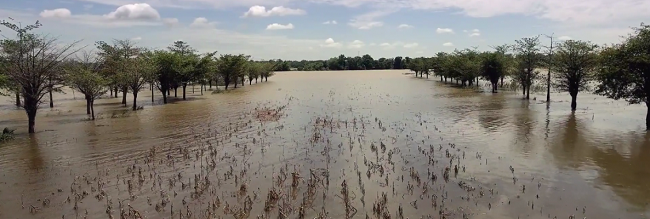Climate Change is among the leading causes of rising global hunger according to a new report released by the UN’s Food and Agricultural Organisation (FAO) on Tuesday, September 11, 2018.

Pointing to extreme weather events, land degradation and desertification, water scarcity and rising sea levels, the authors show how climate change already undermines global efforts to eradicate hunger.
Overall, the number of hungry people grew for the third year in row in 2017, reaching a total of 821 million worldwide. The paper warns that this number will continue to rise if countries fail to tackle climate change and to build resilience to its unavoidable impacts.
In a joint foreword to the report, the heads of the UN Food and Agriculture Organisation (FAO), the International Fund for Agricultural Development (IFAD), the UN Children’s Fund (UNICEF), the World Food Programme (WFP) and the World Health Organisation (WHO) call for an integrated approach to counter the adverse effects of climate change on food production systems:
“If we are to achieve a world without hunger and malnutrition in all its forms by 2030, it is imperative that we accelerate and scale up actions to strengthen the resilience and adaptive capacity of food systems and people’s livelihoods in response to climate variability and extremes,” the leaders said.
The number of extreme climate-related disasters, including extreme heat, droughts, floods and storms, has doubled since the early 1990s, with an average of 213 of these events occurring every year during the period of 1990-2016. These disasters harm agricultural productivity of major crops such as wheat, rice and maize causing food price hikes and income losses that reduce people’s access to food.
Data in the FAO study adds further evidence to this trend, showing that prevalence and number of undernourished people tends to be higher in countries highly exposed to climate extremes. Undernourishment is higher again when exposure to climate extremes is compounded by a high proportion of the population depending on agricultural systems that are highly sensitive to rainfall and temperature variability.
To better illustrate the link between climate change and food insecurity the UN’s World Food Programme, in a collaboration with the UK met office, has developed an interactive map that outlines different scenarios for the future. By altering the level of emissions and adaption measures, users can explore how vulnerability to food insecurity could play out in different regions over time.
Landmark agreements such as the Paris Agreement and the 2030 Agenda for Sustainable Development have already acknowledged the link between hunger and climate change as well as the need for urgent action to protect the most vulnerable communities.
In December, the climate change conference COP24 in Poland will see the international community come together to finalise the rulebook of the Paris Agreement and to deliver on its promises.
